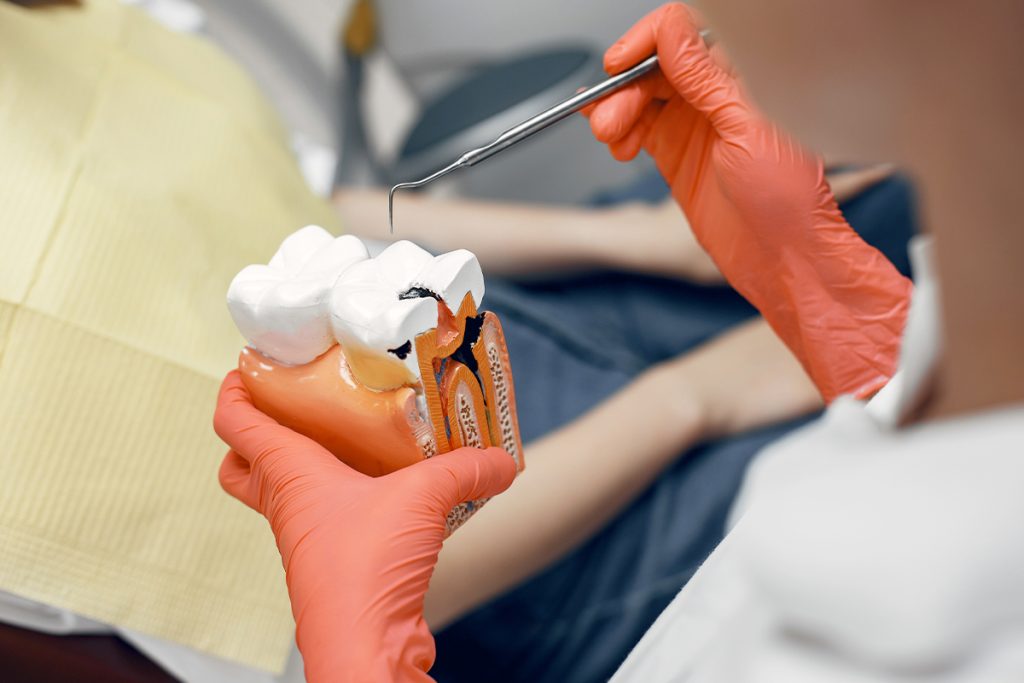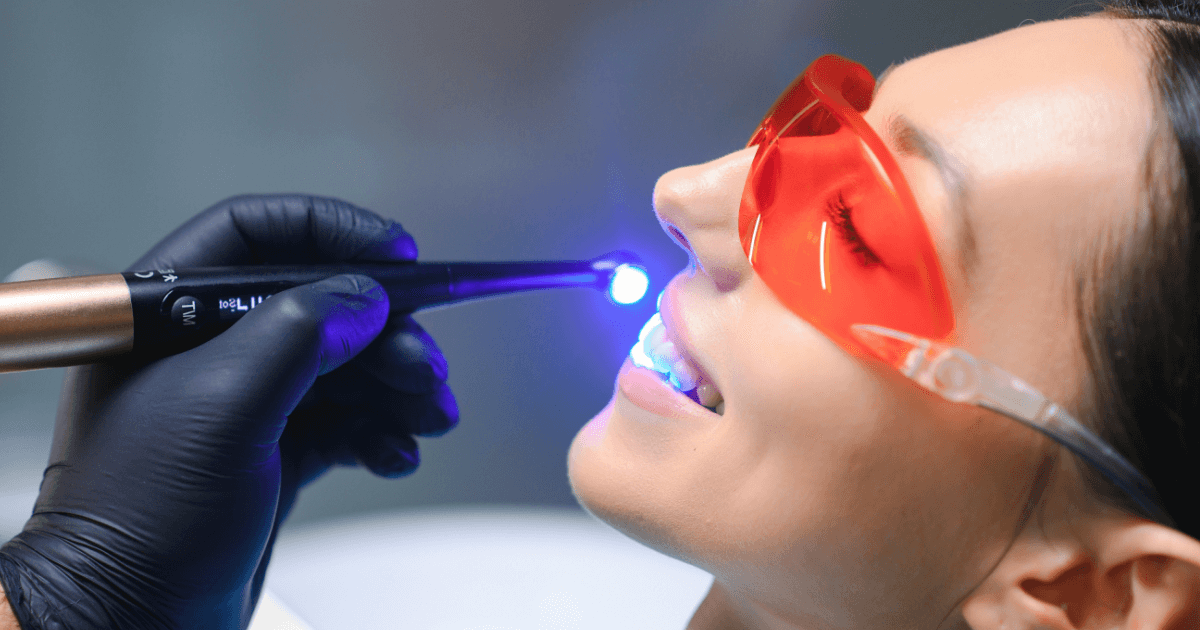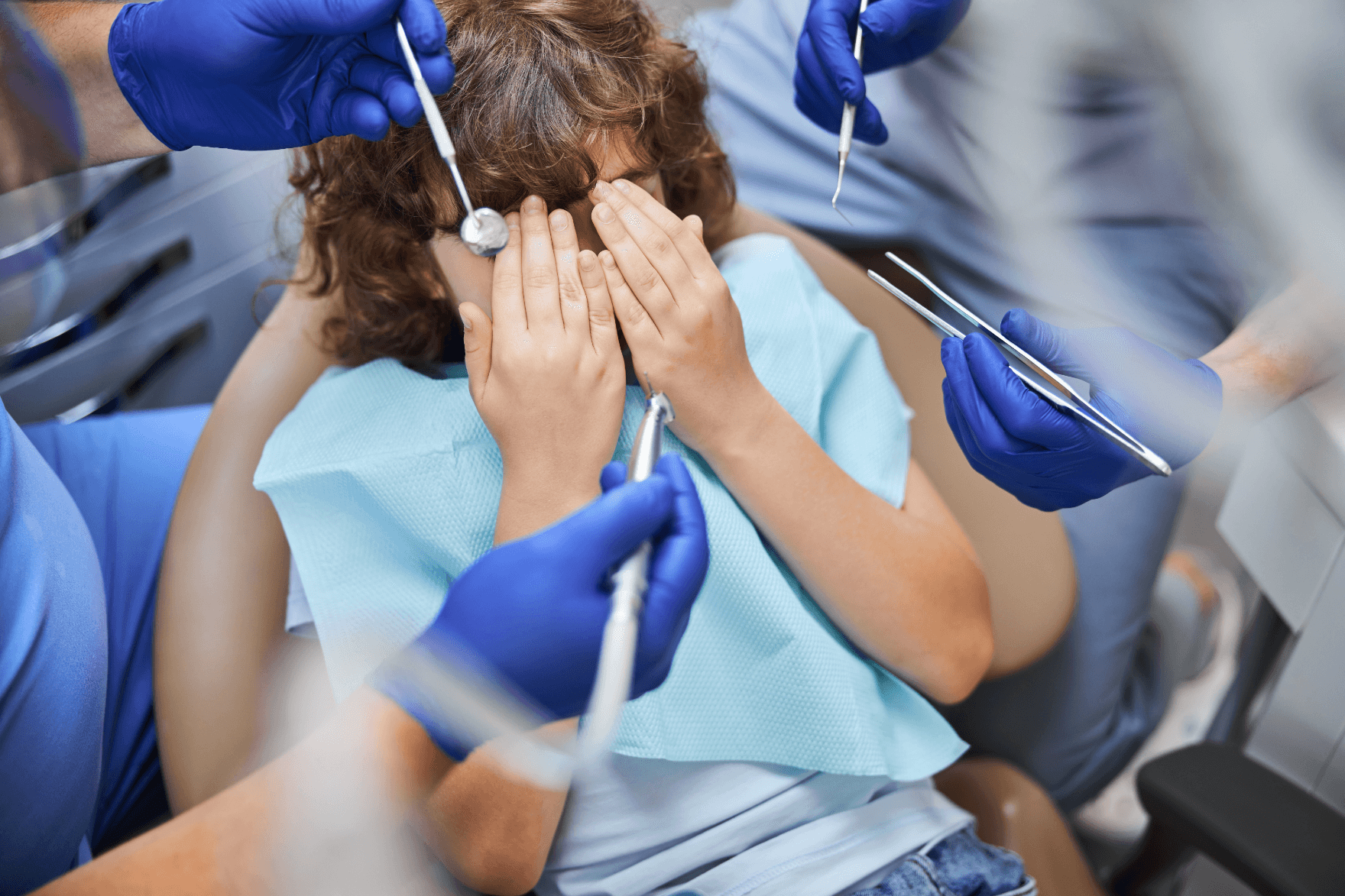Very few people in life have never experienced tooth decay (caries). Caries is generally considered the most common human disease and can occur even in individuals who are diligent with their oral hygiene and brushing.
What exactly is caries, and how does it look?
Caries is the deterioration of the hard tooth tissues, specifically dentin, and it typically manifests as a black spot on the outer surface of the tooth. Both adults and children can develop caries, and numerous factors contribute to its formation.
In its early stages, caries appears as a white spot, affecting only the surface layer of the tooth. If left untreated at this stage, it progresses to the dentin and spreads much faster than on the enamel. At this point, it can cause pain, with the tooth becoming sensitive to hot and cold beverages or food, and later, caries may lead to discomfort during chewing.
How does caries develop?
As mentioned earlier, several factors contribute to the development of caries, and the main culprits are bacteria, plaque, carbohydrates, and acids.
Bacteria accumulate on the surface of the teeth - enamel - and form a layer called plaque. These bacteria feed on sugars, producing acids that start to erode the enamel and penetrate deeper into the dentin.
There are "good and bad" foods for dental health
From childhood, parents teach us that sweets have a negative impact on our teeth, but they are not the only foods that promote the development and spread of caries.
Foods that are rich in carbohydrates - such as chips, white bread, crackers, and even dried fruits - can increase the risk of caries formation. This food lingers on the tooth surface and lowers the pH value in the mouth, leading to an increase in sugar levels that bacteria feed on, producing more acid.
However, not all foods are bad for our oral health. Foods such as milk and dairy products, meat, vegetables, eggs, fish, and nuts reduce the acidity in the mouth and provide some protection against caries.
Is caries prevention possible?
Yes, absolutely. Although it might sound like a generic piece of advice that many people consider insufficient, proper oral hygiene is the key to preventing most oral problems, including caries. Regular dental check-ups are essential as well.
Caries usually begin to form on teeth in the early teenage years until the late 20s. People prone to caries might have been less exposed to fluoride, so practicing good oral hygiene and following a proper diet is especially crucial for them.
Daily brushing and oral hygiene aim to remove plaque from the teeth. However, there are hard-to-reach areas between the teeth where caries can develop. While a regular toothbrush, when used correctly, is sufficient, an electric toothbrush is excellent for accessing those harder-to-reach places. Additionally, using dental floss can help remove food debris that a toothbrush alone cannot reach.
Treatment of caries
In the early stages, caries can sometimes be remineralized through cleaning and multiple applications of fluoride. However, in more advanced stages, a tooth affected by caries cannot regenerate or be remineralized. Instead, the affected tissue must be removed and filled with materials like a white filling or a dental filling (plomb).






